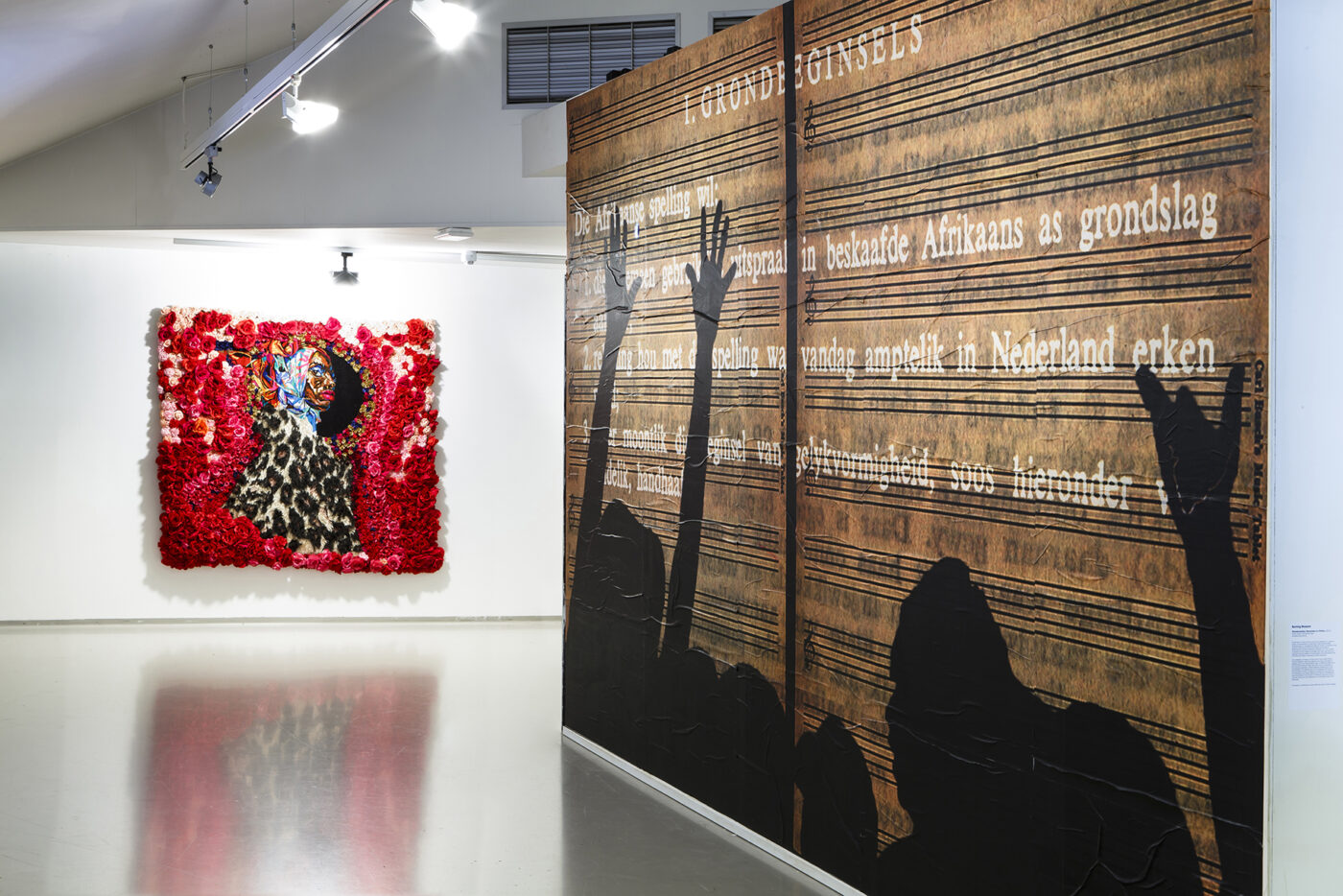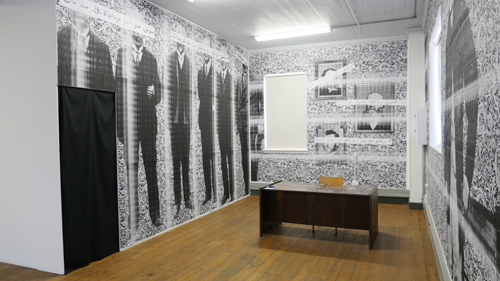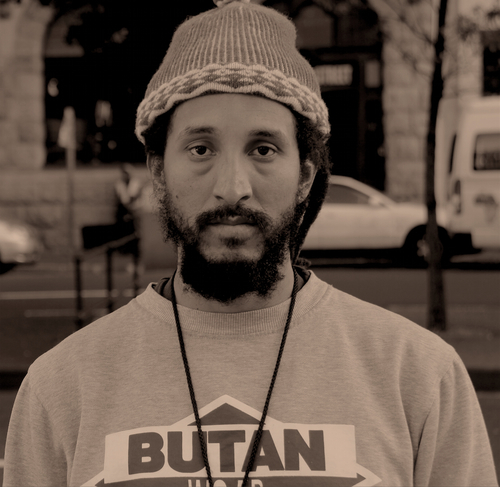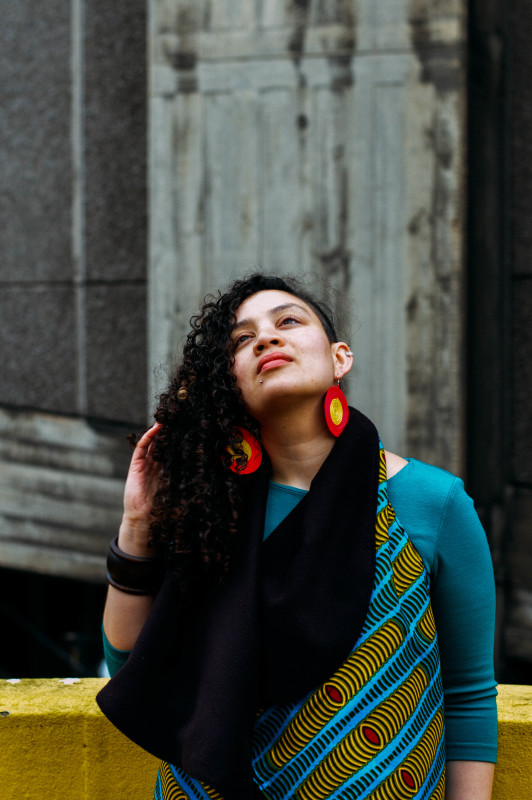 Installation of Re(as)sisting Narratives, curated by Chandra Frank (2016). Photo: Eva Broekema / Framer Framed
Installation of Re(as)sisting Narratives, curated by Chandra Frank (2016). Photo: Eva Broekema / Framer Framed Interview: Chandra Frank in conversation with Toni Stuart
Toni Stuart (b. 1983, Cape Town, South Africa) is a South African poet, performer and spoken word educator. In 2013 she was named in the Mail and Guardian’s list of 200 inspiring Young South Africans. She has an MA Writer/ Teacher (Distinction) from Goldsmiths, University of London, where she was a 2014/2015 Chevening Scholar. Stuart’s work uses poetry to interrogate a range of social issues such as the stories of place and displacement. Her work has been published in anthologies, journals and non-fiction books in South Africa and the United States of America. In 2014 she was part of the Scottish Poetry Library’s Commonwealth Poets United exchange. In 2016 she presented her work at Framer Framed in Amsterdam as part of the exhibition Re(assisting Narratives (2016), curated by Chandra Frank.
Most recently she collaborated with the flamenco company dotdotdot dance as part of the Sadler’s Wells Wild Card Nights. She is currently working on her first poetry collection: Krotoa-Eva’s Suite: a cape jazz poem in three movements which tells the largely unknown story of the 17th century Khoi woman Krotoa-Eva, who played a significant role in South Africa’s history during the time of the first Dutch settlers. Together with Kurt Orderson and supported by Framer Framed she presented Krotoa Eva’s Suite: a cape jazz poem in three movements for the first time as party of the exhibition Re(assisting Narratives (2016), curated by Chandra Frank.
Toni Stuart’s poetry takes on the re-imagined story of Krotoa-Eva, a 17th century Khoi woman who lived and worked in the house of Jan Van Riebeeck, the first VOC Commander at the Cape, and played a pivotal role in South African history. Speaking Koina, Dutch and Portuguese, she worked as a translator between the Dutch and the Khoi. The poems give voice to Krotoa-Eva’s ‘interior’ life, and aim to offer a counter-narrative to the predominantly white, male, colonial perspectives through which her story has previously been told. Kurt Orderson’s loose visual interpretation of the story gives weight to the presence of Krotoa-Eva’s voice.
Chandra Frank: It matters how we narrate and tell stories, and which perspective we decide to represent. How did you decide to re-imagine Krotoa-Eva’s story?
While on the MA Writer/ Teacher program at Goldsmiths, University of London, I wanted to use my creative writing dissertation as an opportunity to explore and re-imagine a historical South African narrative that would explore and investigate South African mixed race (commonly known as “Colored”) identity. I was inspired by the work of Kamau Brathwaite (The Arrivants Trilogy) and Professor Joan Anim-Addo (Imoinda: Or She Will Lose Her Name) who had both written creative texts that re-imagined historical Caribbean narratives.
As a woman of mixed race identity, I was drawn to Krotoa-Eva and her story, and especially the fact that so little is written about her. Furthermore, the accounts of her life have largely been told through a white male colonial gaze, such as the journals of her husband Peter Van Meerhoff and Jan Van Riebeeck, in whose house she lived and worked. I was interested in re-imagining her story in her own voice, not so much “giving voice” to her, as she already has/had one. But rather, asking the question, how would she have told her own story, and, what was her “interior lived experience” as Toni Morrison refers to the lives of our ancestors who are no longer with us, but whose stories we must listen to all the same.
In the installation as a whole, and in your poetry it becomes clear that rhythm and the lyric of the poetry are at the forefront. Can you tell me more about how Cape Jazz influenced your poetry aesthetically?
The full title of the collection is Krotoa- Eva’s Suite: a cape jazz poem in three movements. Music is the singular most important influence in my work, after poetry. Cape Jazz music has a very particular sound and feel. To me, it is the one art form that truly captures the story, the history, the emotions, the essence of Cape Town – our difficult and still unfolding history, and, more specifically, that of the city’s mixed race/ ‘Colored’ community. There is a movement, a deep knowing in the music, in its structure and sound, in its rhythms and movements that I have always been drawn to. I wanted to explore how I could use this sound to create a particular poetry aesthetic – one that is rooted in Cape Town, as this story is. The late Irish poet John O’Donohue said: “Music is what poetry wants to be.” For me this is true – my creative life is filled with this tension of wishing that my words could be as powerful and wordless as music, and have as visceral and poignant an impact on the body, on people’s hearts and minds, as music does. So I played with rhythm on the page, while writing the poems, I played with the idea of jazz riffs, and improvisations and reprises to create the forms and structures of the poems, and the collection as a whole.
You decided to make a poetry installation with filmmaker Kurt Orderson, can you tell us something about your artistic collaboration?
It’s been an honor to finally work with Kurt Orderson. He is an award-winning filmmaker, whose work lives and breathes the mandate of “speaking truth to power”. He is also deeply concerned and influenced by the healing of our community, the need to reclaim and affirm our identities, to see ourselves as whole and powerful, and to create the kind of world we want to be living in.For this collaboration,Kurt is doing a loose visual interpretation of a selection of the poems. We’ve recorded the audio, and using this as a base, he will create an audio-visual installation that brings the spirit of Krotoa-Eva into the gallery space [of Framer Framed] physically. It has been a journey for both of us, as it’s about connecting with our own history too – personally & politically, and finding ways to translate across the mediums of words, sound and visuals.
Kurt Orderson (1982, Cape Town, South Africa) is an independent filmmaker from Cape Town, South Africa. Orderson started his career after completing his film and television studies at Monash University, South Africa. He has worked for the South African Broadcasting Corporation, producing, shooting and directing educational programmes. He has worked as director, cinematographer and is the founder and director of Azania Rizing, a productions company that aims to inspire young people through creative storytelling about Africa and African Diasporas. The company has aims at mapping the influence of African legacies around the world to facilitate international dialogue by linking local and global stories.
This text was originally published in the exhibition catalogue.
The exhibition Re(assisting Narratives (2016) was curated by Chandra Frank, and on show at Framer Framed in Amsterdam (NL) from 28 August – 27 November 2016, and at District Six Museum ‘Homecoming Centre’ in Cape Town (SA) between November 23 – December 13 2016.
South Africa / Colonial history /
Exhibitions

Exhibition: Re(as)sisting Narratives in South Africa
Exploring lingering legacies of colonialism between South Africa and the Netherlands through engaging with contemporary artists from both countries

Exhibition: Re(as)sisting Narratives
Exploring lingering legacies of colonialism between South Africa and the Netherlands through engaging with contemporary artists from both countries
Network

Kurt Orderson
Filmmaker
